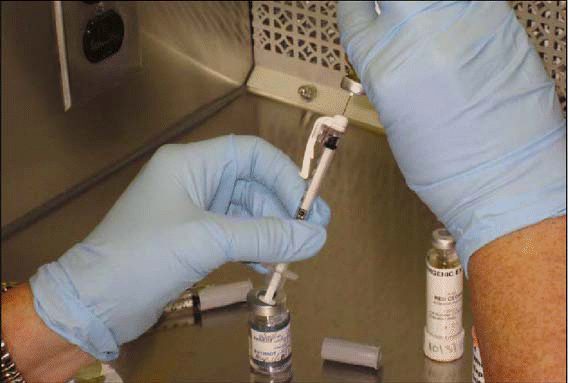WASHINGTON, DC—Compounding sterile medications for parenteral use, such as allergy drugs, in a private physician’s office is potentially subject to almost as much scrutiny and regulation as are visited upon commercial preparers of such medicines.
Explore This Issue
November 2007Otolaryngologists, with their many allergy patients, are among the specialists most affected by these rules, regulations, and standards. These standards have been established in order to reduce some of the 17 billion adverse medical events that occur each year in the United States. Of that number, 44,000 deaths result from medical error, of which mistakes in mixing and compounding allergy medicines are a part.
USP: The Gold Standard
Steven M. Houser, MD, Assistant Professor of Otolaryngology at Case Western Reserve University in Cleveland, told the miniseminar audience that the US Pharmacopeia (USP) is the gold standard of vial mixing. He said that although USP is not a government entity, it does have enforcement power, and it is the basis for procedure and safety in compounding sterile medications for parenteral use. USP has five major criteria in this area:
- Preventing microbial contamination (maintaining sterility).
- Removing excessive bacterial endotoxins from the medications.
- Eliminating variability in the strength of correct ingredients.
- Preventing unintended chemical and physical contamination.
- Using only correct types and qualities of ingredients in sterile preparations.
To achieve these objectives, USP has developed a manual that covers in minute detail the steps to be taken and the correct procedure to be followed for compounded sterile preparations (CSPs). Chapter 797, Pharmaceutical Compounding—Sterile Preparations, pertains to private physician offices, and it is with this document that most of the miniseminar was concerned.
Chapter 797 went into effect on January 1, 2004, and covers a wide range of topics about compounding sterile preparations, labeling, and storage. The standards are enforced by the Food and Drug Administration and state boards of pharmacy. The Joint Commission on the Accreditation of Healthcare Organizations (JCAHO) has adopted the USP guidelines, but JCAHO is interested mostly in hospital pharmacies, which, in many cases, check and test procedures in physicians’ offices.
CSPs are administered to patients via application, implantation, infusion, inhalation, injection, insertion, instillation, and irrigation. There are four categories of CSPs: low risk, medium risk, high risk, and immediate use. Physician office preparation falls into the medium risk category.

CSPs are defined as biologics, diagnostics, drugs, nutrients, and radiopharmaceuticals, all of which are manufactured sterile products that must be prepared in a physician’s office according to the manufacturer’s instructions.


Leave a Reply